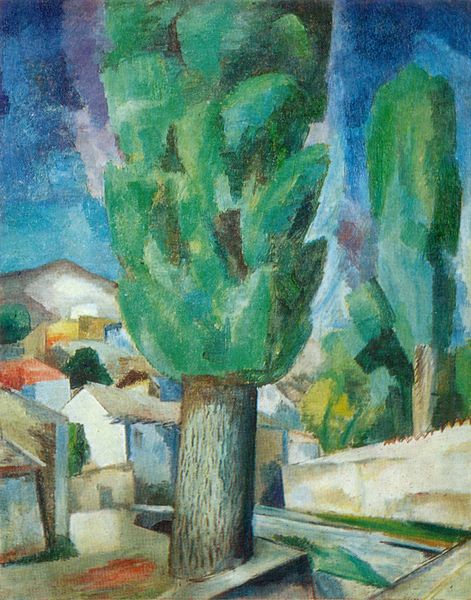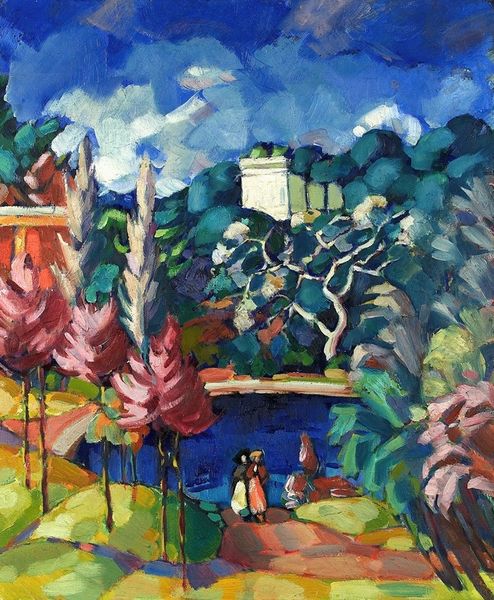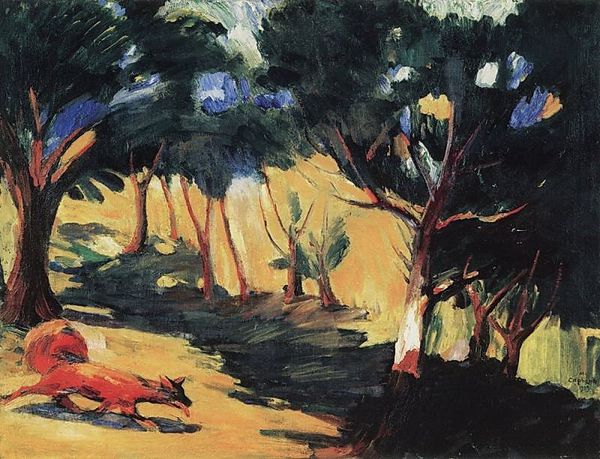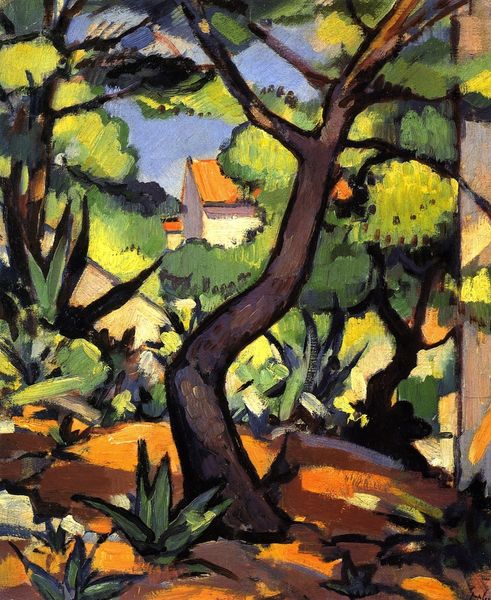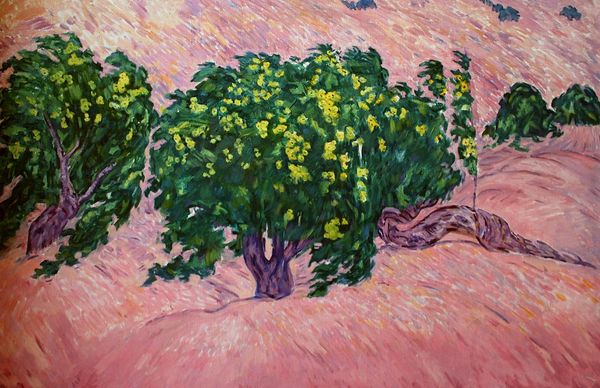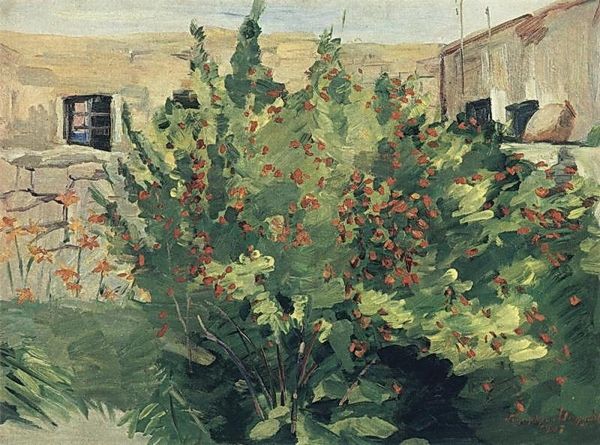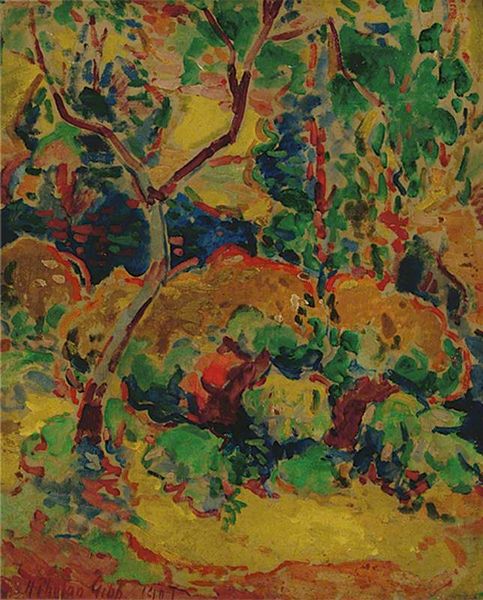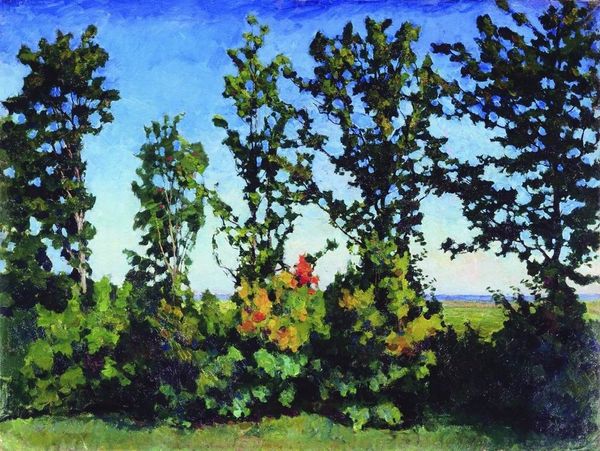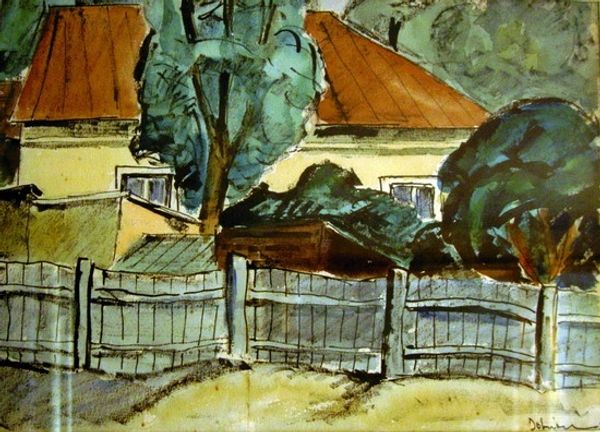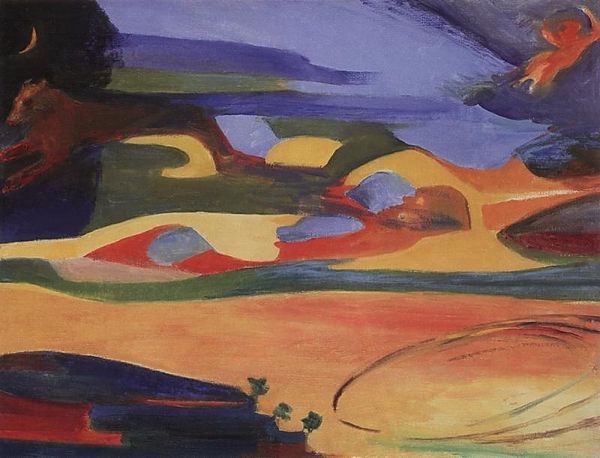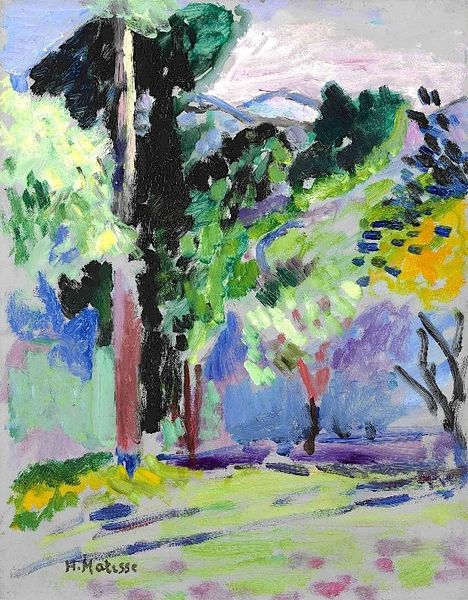
Copyright: Martiros Sarian,Fair Use
Curator: Looking at this vibrant painting, the first thing that strikes me is the bold color palette—particularly the juxtaposition of the bright yellow foreground against the cool greens and blues. It feels almost Fauvist in its approach. Editor: Precisely. What you're observing aligns perfectly with the piece we have here titled, "Pomegranate," completed by Martiros Sarian in 1930. You've accurately picked up on the influence of Fauvism, and there are touches of Orientalism in Sarian's style, too. Curator: It's intriguing how he captures light. The way the shadow stretches from the base of the tree adds a certain drama, almost as if time itself is being represented in the painting. There's this quiet stillness, and simultaneously, movement, within what seems like a static landscape. Editor: Consider how the painting’s socio-political context might speak to our modern experience of migration. Sarian experienced displacement; this visual language may carry cultural meaning tied to his identity, as Armenia was facing considerable political upheaval. I would also push against seeing this landscape as static, thinking of how land and ideas of homeland function. Curator: That's such a critical point to consider. Especially knowing Sarian was part of a diaspora experience—it allows one to view not just pomegranates on the tree but symbols of life, resilience, and hope amid a changing landscape of conflict. Editor: Yes, precisely! I wonder how exhibition spaces have impacted public perception of Sarian’s paintings? Have we leaned more on his technical brilliance and innovation, as an artist, and inadvertently erased elements of history of political tensions woven within the artworks? Curator: That's a valid question to explore. The visual language of Fauvism lends itself easily to be understood simply as pleasing. This also touches on art's responsibility in creating a dialogue around challenging societal issues that concern diasporic communities in contemporary life. Thank you. Editor: My pleasure, this exploration underscores why continuous reassessment is so valuable. We can always enrich our understanding of art by linking it to broader issues.
Comments
No comments
Be the first to comment and join the conversation on the ultimate creative platform.

